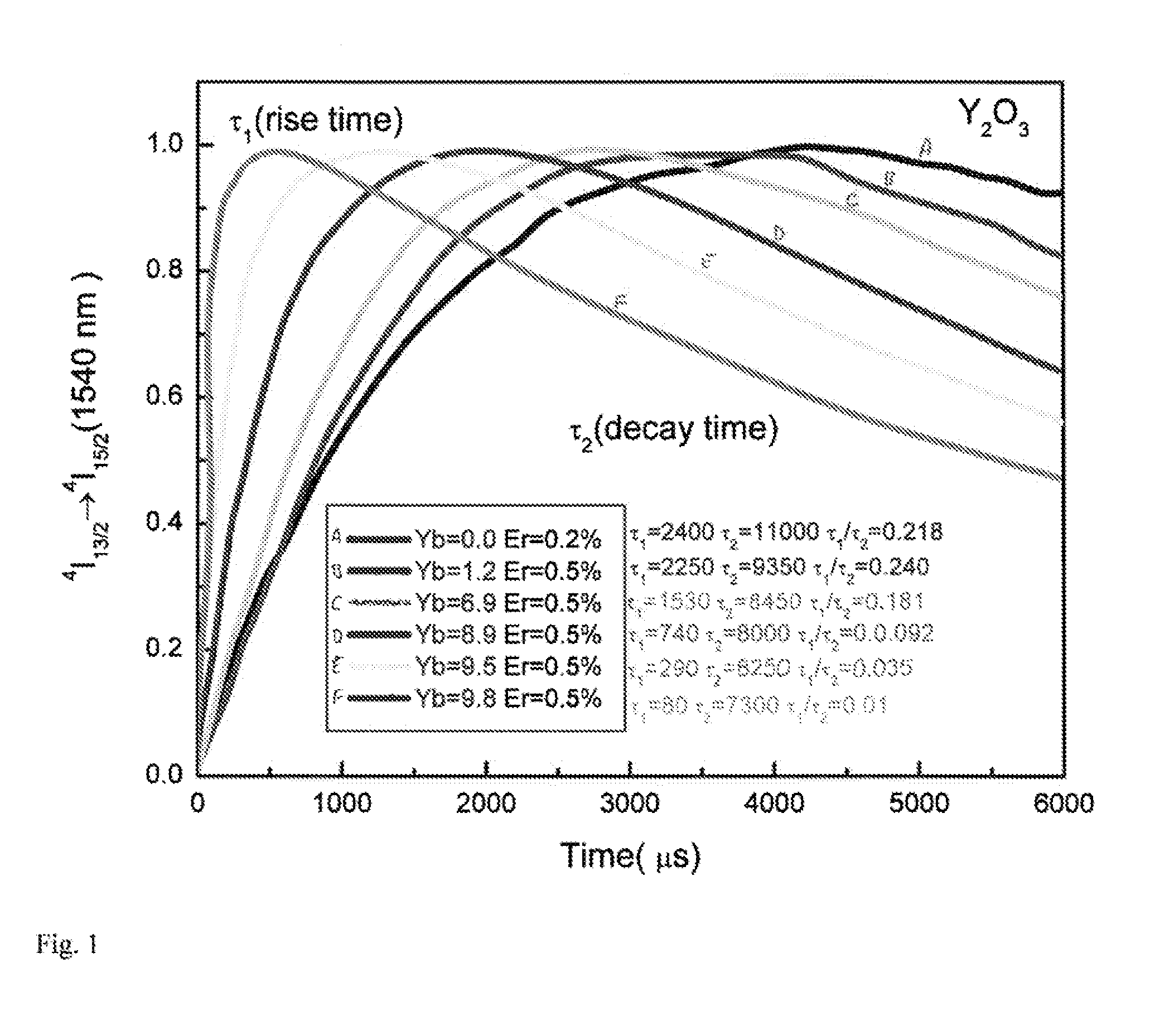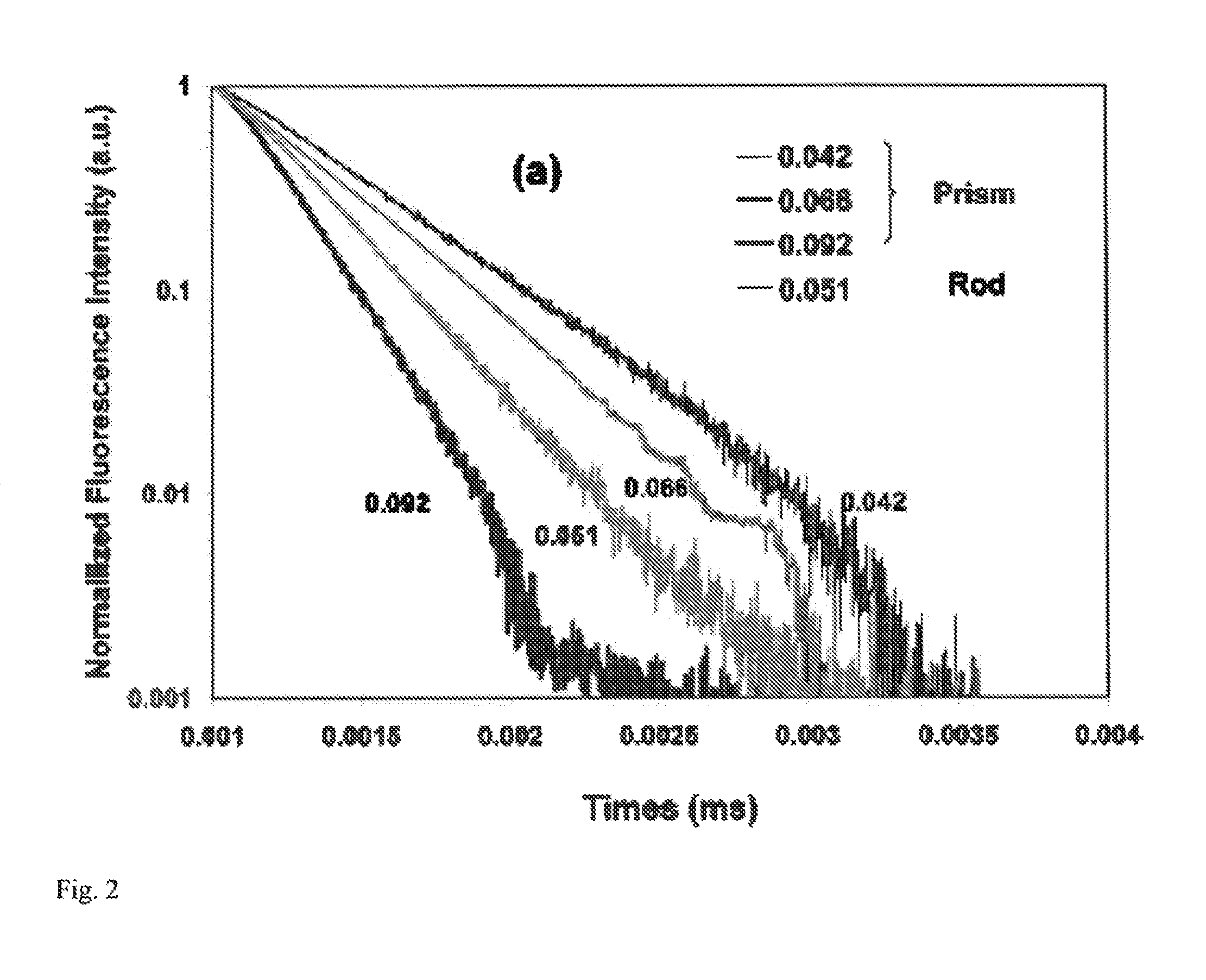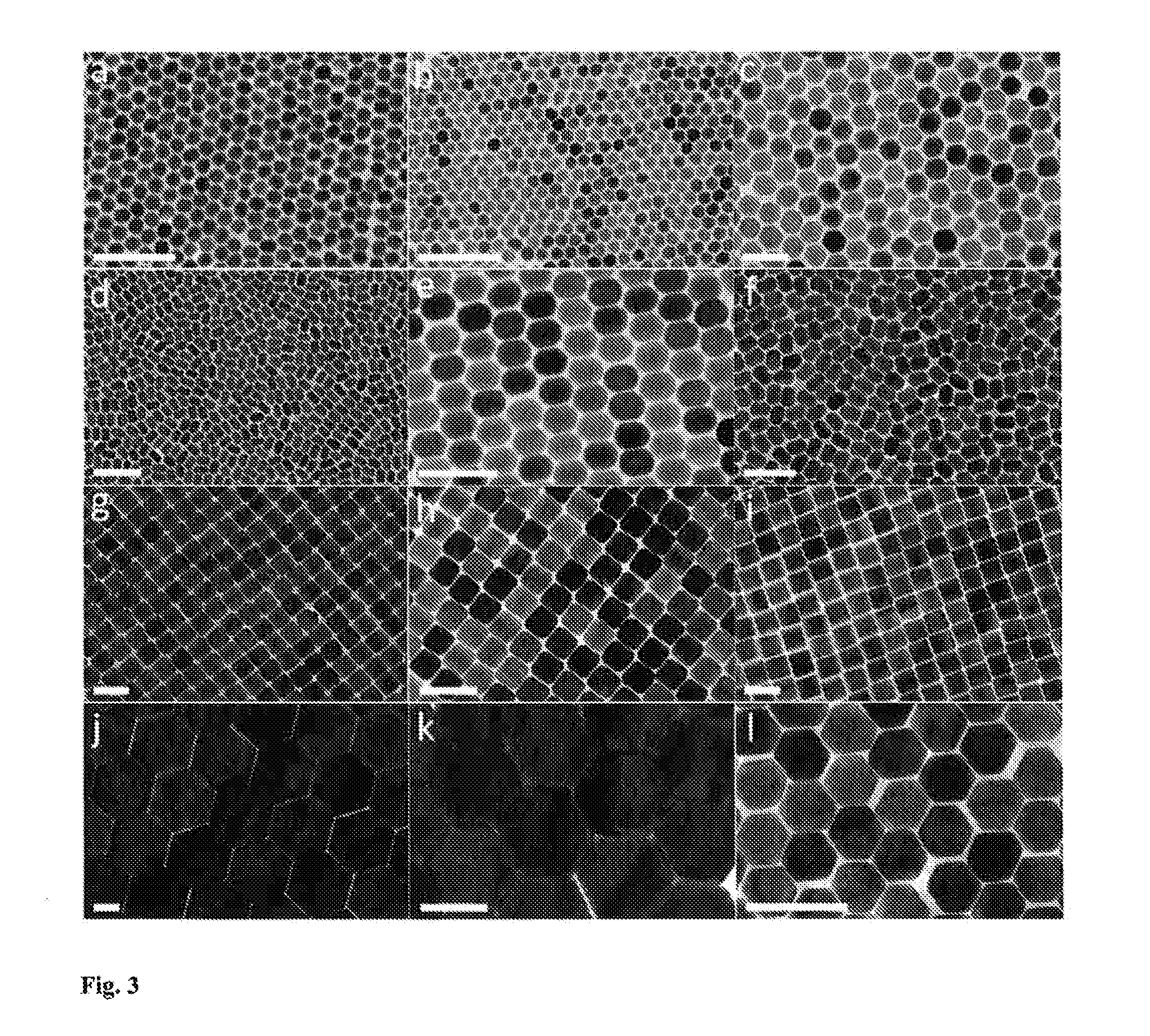Morphologically and size uniform monodisperse particles and their shape-directed self-assembly
a monodisperse particle, shape-directed technology, applied in the direction of lanthanide oxide/hydroxide, crystal growth process, peptide, etc., can solve the problems of inability to synthesize ucnps or other inorganic particles using existing recipes, limited methods, and inability to achieve the feasibility of synthetic approaches, so as to increase the size of monodisperse particles and quench the reaction
- Summary
- Abstract
- Description
- Claims
- Application Information
AI Technical Summary
Benefits of technology
Problems solved by technology
Method used
Image
Examples
example 1
Synthesis of Upconversion Nanophosphors (UCNPs)
[0074]All syntheses were carried out using standard Schlenk techniques and commercially available reagents. 1-Octadecene (ODE; technical grade, 90%), oleic acid (OA; technical grade, 90%), Na(CF3COO), and ethylene glycol (EG) were purchased from Sigma Aldrich. RE(CF3COO)3 (RE=Y, Yb, Er, Tm) and Y, Yb, and Er 1,000 ppm ICP standard solutions were purchased from GFS Chemicals, Inc. Ho(CF3COO)3 was purchased from Rare Earth Products, Inc. Ce(CF3COO)3 was prepared according to the literature method using cerium(III) carbonate hydrate (Aldrich) and trifluoroacetic acid (Alfa Aesar) as the precursors. A typical protocol for the synthesis of hexagonal phase NaYF4-based UCNPs is described below: certain amount of Na(CF3COO) and Re(CF3COO)3 together with 15 mL of ODE and 15 mL of OA were added to a three-necked flask. The mixture was then heated under vacuum at 100° C. for 45 min to form a transparent, light-yellow solution. The reaction flask ...
example 2
Superlattice Formation
[0075]2.1 Assembly of UCNPs into Superlattices. A 1.5×1.5×1 cm3 Teflon well was half-filled with ethylene glycol (EG). Varying concentrations of UCNPs from Example 1, ranging from 1 mg / ml to 20 mg / ml are prepared in hexane, 15 μl of suspension was drop-cast onto the EG surface and the well was then covered by a glass slide to slow down solvent evaporation. This differentiates our assembly setup from being a miniature Langmuir-Blodgett trough without mechanical barriers. After 40 min, the nanocrystal film was transferred onto glass substrates or TEM grids (300-mesh) that was further dried under vacuum to remove extra EG.
[0076]2.2 Structural and Optical Characterization Transmission electron microscopy (TEM) images and electron diffraction patterns were taken on a JEM-1400 Microscope operating at 120 kV. High-resolution TEM (HRTEM) images were taken on a JEOL2010F microscope operating at 200 kV. Scanning electron microscopy (SEM) was performed on a JEOL 7500F HRS...
example 3
Synthesis of NaYF4:Yb,Er and LiYF4:Yb,Er Particles of the Invention
[0077]The reaction flask containing the dissolved precursors is submerged into the molten salt bath while still purging with N2 at a steady flow rate. It is important that the salt bath maintains a steady temperature range of 340-343° C. for the entirety of the reaction. After completion of the reaction, the flask is removed from the salt bath and immediately quenched with room temperature ODE. The product is precipitated with ethanol and centrifuged to obtain the nanoparticles. Fourier Transform InfraRed spectroscopy (FTIR) showed oleic acid to be present on the particles' surfaces.
[0078]The above protocol is the standard protocol for synthesis of halide, sulfide, and oxysulfide nanoparticles. Particle size and morphology can be controlled by varying reaction conditions such as precursor ratio, heating rate of the salt bath, and reaction time. The initial rate of heating determines the morphology by selecting which ...
PUM
| Property | Measurement | Unit |
|---|---|---|
| Temperature | aaaaa | aaaaa |
| Temperature | aaaaa | aaaaa |
| Temperature | aaaaa | aaaaa |
Abstract
Description
Claims
Application Information
 Login to View More
Login to View More - R&D
- Intellectual Property
- Life Sciences
- Materials
- Tech Scout
- Unparalleled Data Quality
- Higher Quality Content
- 60% Fewer Hallucinations
Browse by: Latest US Patents, China's latest patents, Technical Efficacy Thesaurus, Application Domain, Technology Topic, Popular Technical Reports.
© 2025 PatSnap. All rights reserved.Legal|Privacy policy|Modern Slavery Act Transparency Statement|Sitemap|About US| Contact US: help@patsnap.com



